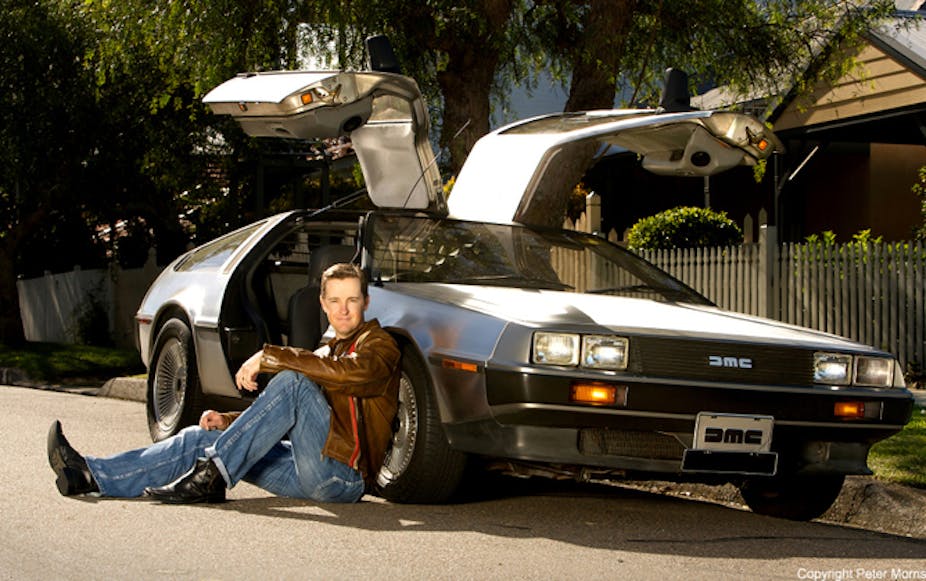I don’t know whether Australian author Matthew Reilly ever studied Aristotle, but he certainly studied action novels. As the subject of tonight’s Australian Story on ABC, Reilly’s affinity with the Greek philosopher is unlikely to be mentioned – but maybe it should be.
Aristotle said it first: if you want to write a good story (or, in his terms, a good tragedy), you must have two things: plot, and character. Plot is, for Aristotle, “the arrangement of the incidents” — the causal relations between things, people and events. Character refers to the individuals who are the actors in that plot, and all their personal qualities and moral capacities, along with the relationships they have with each other and with the choices they have to make.
Now, OK, he wrote that a very long time ago (it comes from his Poetics, which was written around 350BCE). But this, the very first “how to write” book, is a foundation stone for narrative theory two millennia later, and continues to inform contemporary writers, whether or not they have ever read Aristotle.
Reilly has described himself as reading voraciously in the action novel genre; and then, in 1996, writing and self-publishing his first novel.

In an instance of what is just a dream for many emerging writers, that novel managed to attract the attention of a mainstream publisher of popular fiction, Pan Macmillan Australia. It was picked up and republished, to surprising success. Since then he has barnstormed his way around the country, filling bookstores and writers festivals, and breaking sales records.
He is, arguably, Australia’s most famous author, and certainly the most popular fiction writer, if by “popular” we mean “volume of sales”, having sold more than 4 million books worldwide. In 2013, the Nielsen BookScan reported, he was the only Australian fiction writer on the list of the top ten bestsellers in this country: a list whose sole criterion is sales.
Reilly’s The Tournament, at sixth place, sold an astounding 114,400 copies. This, bear in mind, was in just one year, and in Australia, where even an excellent novel by a known author is pushing to sell 10,000 copies.
The rhetorical triangle
Matthew Reilly is no master of prose: his use of English is functional, his dialogue stilted, the characters are cardboard cut-outs, and his descriptions are clichéd. But he can really tell a story, and his rollercoaster action thrillers attract an enormous audience of otherwise-occasional readers — adolescents, and older men — people who rarely crack a book. How does he do it, when literary authors can struggle even to get a review?
Aristotle offers an answer. His concept of the rhetorical triangle requires ethos (or the writer’s appeal), pathos (or the reader’s emotion), and logos (or the actuality of the text) to be in alignment.

When an author tells a story, convincingly, to the appropriate audience, the story succeeds. Reilly’s work is not well aligned with the literary end of the writing world, and I suspect he rarely features on the usual book club reading lists. It is, though, perfectly aligned with the community of those who are generally unmoved by literary fiction.
Literary authors tend to write about life as it is: complex, often disordered and disappointing, and rarely achieving resolution. Popular fiction, on the other hand, tends to show life as it could be: filled with drama, in exotic locations and with beautiful companions, and never easy or ordinary, but deeply, satisfyingly, committed to the restoration of order.
That’s Reilly’s domain: the world of popular storytelling. Unusually for successful Australian authors, he focuses on just the one narrative mode: the thriller. And he is good at it, offering action but not reflection; danger, but not the quotidian; and clarity of purpose rather than existential doubt.
His novels are crammed with energy and urgency: from the very first pages of his stories his protagonists can be found diving under the Antarctic ice shelf; fighting off demented monkeys; balancing atop a tower; racing through crocodile-infested swamps. And he never lets up on the pace: his heroes are on a wild ride from start to finish, facing extraordinary challenges in unfamiliar environments, possessed of specific skills and powerful weapons, and testing themselves against the sorts of demands that would drive most of us cowering, whimpering, into hiding.
And this, I suspect, is why he has achieved such success; he understands story, and he focuses on this, rather than on the art of language or experiments in form.
Story matters: it is how we find ways of living in, and making sense of, what is often a complex and confusing world. Reilly’s novels allow readers to face threats and tests (vicariously), overcome obstacles and enemies, confront inner anxieties, and finally attain success.
They offer a strong plot, with larger-than-life characters; they manage the build-up of tension, retaining high energy and high urgency. And they end satisfyingly, with the untangling of a mess, the resolving of a crisis, and the restoration of order.
This is an ancient approach to story, and it still works today.

